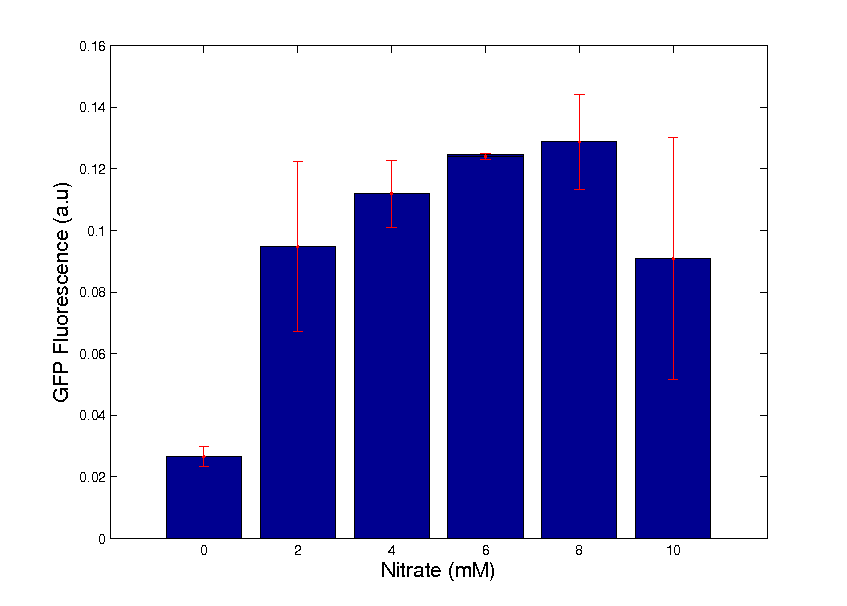Team:BCCS-Bristol/Wetlab/Achievements
From 2010.igem.org
(New page: =Achievements= Despite having an extremely small wet lab team (only two members) we believe we've achieved a lot this year. We've come from our initial ideas stage in July, to possessing ...) |
|||
| Line 18: | Line 18: | ||
We're proud of this part, and hope it will be useful to other teams in the future. | We're proud of this part, and hope it will be useful to other teams in the future. | ||
| + | |||
| + | |||
| + | ==Elegant Solution to Signal Calibration== | ||
| + | |||
| + | |||
| + | [[Image:Ratio0to2 quadratic fit.png|thumbnail|right|400px|Graph 2: Characterising our ratio method]] | ||
| + | |||
| + | As well as making our biobrick, we also worked further to develop a product that would actually function. As part of this we altered the traditional signal detection method of measuring output to remove the problem of misleading figures. Our new method of instead detecting the ratio of two outputs removes difficulties in distinguishing between large signals due to high Nitrate levels and those due simply to large colonies. | ||
| + | |||
| + | |||
| + | As is evident in graph 2, we well characterised this method and found it to work well, particularly within the range relevant to our project. Our results were even good enough to allow the construction of a formula linking signals detected to levels in the soil. | ||
| + | |||
| + | |||
| + | For more information on how the ratio method works and our results from it, click [https://2010.igem.org/Team:BCCS-Bristol/Wetlab/characterising_ratio| here] | ||
| + | |||
| + | |||
| + | == | ||
Revision as of 09:27, 27 October 2010
Achievements
Despite having an extremely small wet lab team (only two members) we believe we've achieved a lot this year. We've come from our initial ideas stage in July, to possessing a fully functional prototype product, good enough to catch commercial attention by the end of October. Alongside this, we've also helped better characterise a pre-existing biobrick.
Below is a brief summary of our biggest achievements
A Well Characterised New Biobrick
The focal point of our wetlab work was the construction and characterisation of a new biobrick [http://partsregistry.org/Part:BBa_K381001 BBa_K381001]. This part is a composite of two pre-existing biobricks, with details of its design available here.
As shown in graph 1, we mapped its behaviour across the range where it was known to be most sensitive, further details of which can be found here.
We're proud of this part, and hope it will be useful to other teams in the future.
Elegant Solution to Signal Calibration
As well as making our biobrick, we also worked further to develop a product that would actually function. As part of this we altered the traditional signal detection method of measuring output to remove the problem of misleading figures. Our new method of instead detecting the ratio of two outputs removes difficulties in distinguishing between large signals due to high Nitrate levels and those due simply to large colonies.
As is evident in graph 2, we well characterised this method and found it to work well, particularly within the range relevant to our project. Our results were even good enough to allow the construction of a formula linking signals detected to levels in the soil.
For more information on how the ratio method works and our results from it, click here
==
 "
"

